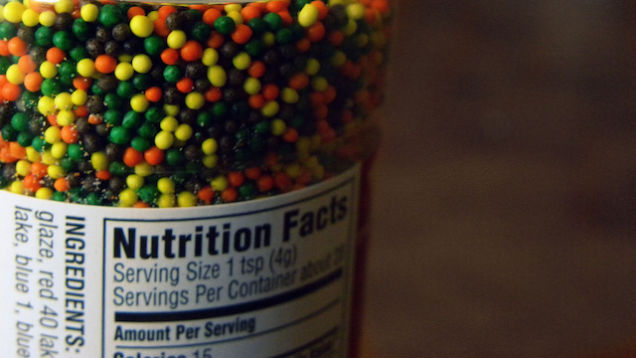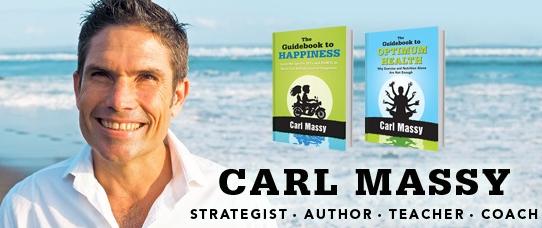By Carl Massy: I do! In fact I would have really liked to have seen it about 12 years ago, but apparently the student was not ready. I had to go through a bit of ‘borderline’ asthma, pneumonia, pleurisy, a few dizzy spells, low energy and a few other things that were all part of the figuring out and moulding of (me) the humble student. So in 2011, I was finally ready to hear what the best formula is for optimum health, optimum weight management, disease prevention and increased vitality.
The magic formula came from Dr Joel Fuhrman MD who specializes in preventing and reversing disease through nutritional and natural methods (author of Eat To Live). His formula is so simple it leaves you wondering if that is all there is to it? Where is the rest of the equation that is designed to confuse the hell out of us? So the equation is (drum roll please):
H = N / C
Is that it?!? And in response to my own question, the answer is “Yes”. Rather than having you try and guess the letters and possibly get frustrated with me at this very pivotal moment, please let me explain:
- ‘H’ stands for ‘Health’
- ‘N’ stands for ‘Nutrients’
- ‘C’ stands for ‘Calories’
So in a sentence, our health is directly proportional to the nutrients that we get, for each calorie that we bring into our bodies.
Now to help us on this journey I am going to introduce you to a few old friends from the Nutrient family, which play a major role in the game of health and vitality. They are:
- Macronutrients. These are fat, protein and carbohydrates (and water); which I am sure you are all familiar with. They are the only foods that provide calories. Fat = 9 calories per gram. Protein & Carbohydrates = 4 calories per gram. All the macronutrients exist in both plants and animal products.
- Next we have the Micronutrients. These include the vitamins and minerals. They all exist in both plants and animal products to varying degrees.
- Then there are Phytonutrients. They are the chemicals that help plants defend against environmental challenges, such as damage from disease, injury, pollutants, pests or ultraviolet light. And who would not benefit from a little protection against pests in their life? These disease fighting nutrients do not exist in animal products.
- The last one is Fiber, which is essential in maintaining healthy functioning elimination.
One thing that research and science is starting to discover is that just like the phytonutrients protect the plants, they produce very similar results for humans, such as protecting tissues and cells from free radicals and their harmful effects. From what I have read I believe that there are 1000’s of phytonutrients and they cannot be isolated because they work like a concert symphony in ways that science is a long way off figuring out. What a lot of studies do agree on is that phytonutrients are great for increased health and disease prevention (from heart disease, to cancer, to diabetes and high blood pressure). In a word they are ‘essential’ to optimum health and disease prevention (I love that word ‘prevention’).
The stuff that is not essential to good health, and can contribute to heart disease is cholesterol; in particular the LDL variety. Too much cholesterol in your blood, and it builds up in the walls of your arteries, causing a process called atherosclerosis, which is a form of heart disease. The body actually needs cholesterol, but the liver produces all the body requires. The main sources of LDL cholesterol (the bad kind) are from animal-based foods like milk, eggs, and meat. Cholesterol does not exist in plants.
Now back to our equation H = N / C. To recap, we want to have the highest nutrient value, per calorie. We have also seen that phytonutrients are starting to get a big name in the prevention and reversal of disease game. Plus we have seen that both plant-based and animal products have all the macronutrients (fat, carbohydrate and protein). And finally we saw that cholesterol (LDL) exists in animal products. So now you are armed with a lot of great information let’s move to the next stage.
The next stage is simple. If you need to consume about 2000 calories of food (and drink) per day for your energy requirements, make sure that every calorie comes loaded with ample amounts of vitamins, minerals and phytonutrients. And since phytonutrients only come from plants, make the majority (80-90%) of your diet consist of unprocessed plant-based foods. Plus significantly reduce the amount of foods that have cholesterol and high fat (i.e. animal-based products).
What I will do now is provide some of the very best Tips I have learned over the years to show how you can use Dr Fuhrman’s formula. As an aside, I like Dr Fuhrman’s work because he has worked with about 10,000 patients, he has 90%+ of his patients that start with Type II diabetes off their medication within 30-days, he has reversed heart disease in his patients, his patients have lost huge amounts of weight, and he has caused his patients LDL levels to go down. Plus he is an athlete and generally a healthy dude. Unlike old Dr Atkins who suffered coronary problems as a result of following his own Atkins diet (doofus!). If you are a meat eater and you think I want you to go hug some trees, skip down to Tip 11 before you read the other 10 Tips.
- The body will naturally shed weight when a diet high in nutrient dense foods is adopted.
- It is not about restricting calories, it is about eating more food that is nutrient dense and crowding out the crap food in the diet.
- Most highly processed or ‘refined’ carbohydrates (sweets, cakes, white bread, sugar, etc.) have high calories but practically no nutrient value.
- Water has 0 calories, so it needs to be the drink of choice. “If you are serious about losing weight, don’t drink your fruit – eat it. Too much fibre and too many nutrients are removed during juicing, and many of the remaining nutrients are lost through processing, heat, and storage time.” Dr Fuhrman.
- All animal products have high saturated fats and cholesterol, so they are best minimized. They also have no fiber or phytonutrients.
- Dark green leafy vegetables are the most nutrient-rich foods on the planet! Eat lots of these. I highly recommend a green (vegetable) drink daily. I swear by it – for energy and vitality.
- Milk (and dairy food in general) is not a health food. It is high in saturated fat and cholesterol. In April 2000 a Harvard study reported that having 2.5 servings of dairy each day boosted prostate cancer risk by more than 30%. That is just one study…
- Dietary factors that induce calcium loss in the urine are animal protein, salt, caffeine, refined sugar, alcohol, nicotine, and aluminum-containing antacids drugs such as antibiotics, steroids, thyroid hormone and vitamin A supplements. So minimize these.
- On average, 25% of the calories in vegetables are from protein. Just so that you know there is protein in plants and you won’t get ‘protein deficiency’ without meat.
- 100 calories of broccoli has more protein (11.1g) than 100 calories of steak (6.4g). Obviously the sizes of each are different, but what we are working on here is the best nutrients for our 2000 limit. The greens are king! Mum was right…”Eat your greens or you can’t leave the dinner table.”
- “Following a strict vegetarian diet is not as important as eating a diet rich in fruits and vegetables. A vegetarian whose diet is mainly refined grains, cold breakfast cereals, processed health-food-store products, vegetarian fast foods, white rice, and pasta will be worse off than a person who eats a little chicken or eggs, for example, but consumes a large amount of fruits, vegetables, and beans.” Dr Fuhrman
The bottom line. A diet that is low in fruit and vegetables is not protecting your body from disease and future illness. Your aim should be to eat lots and lots of green leafy vegetables, a mix of colored vegetables and fruits. Plus eat nuts, seeds and legumes. If a ‘diet’ rules out fruit, chances are it is a short-term diet and not focused on health and disease prevention.
Here’s to a healthy and more well informed you!!







